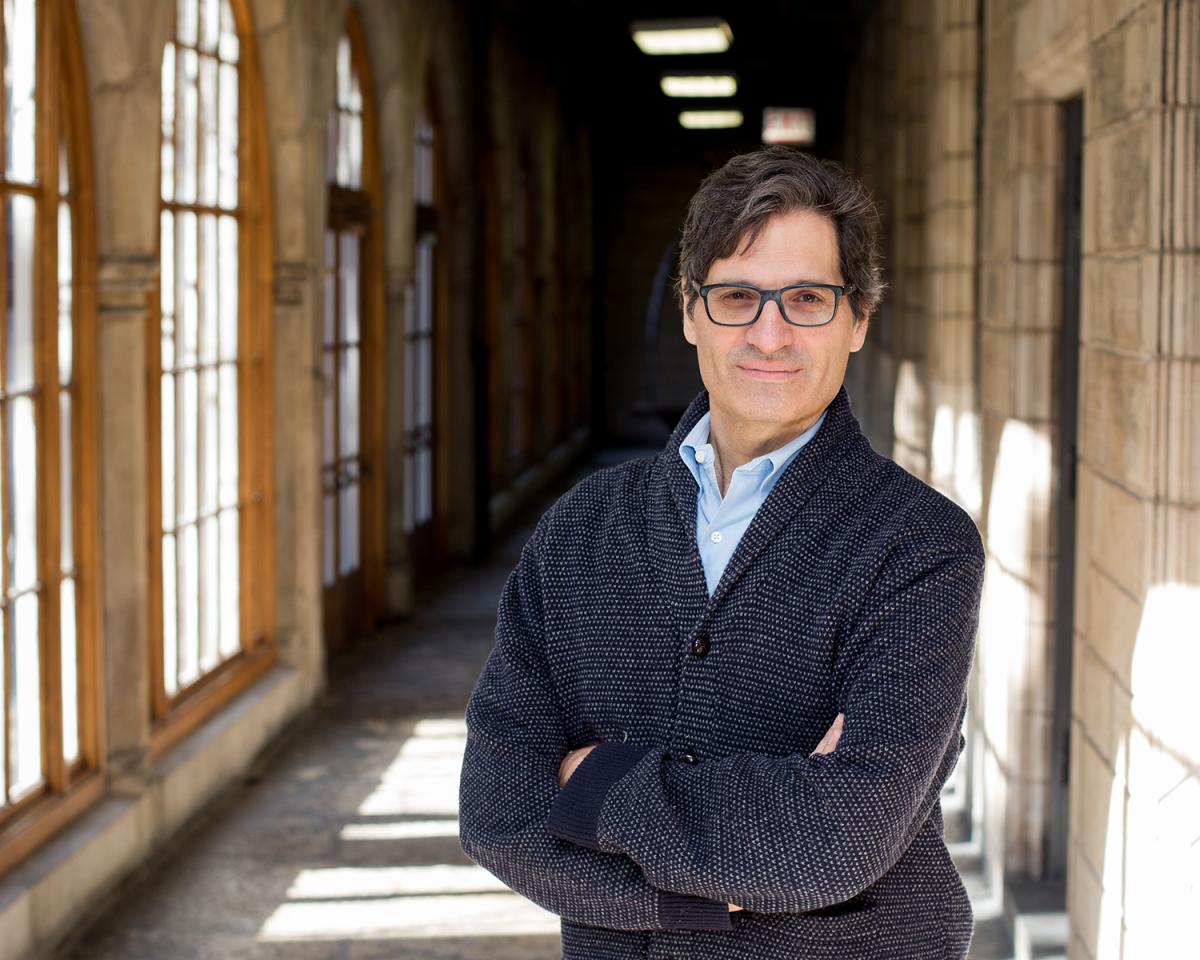A Climate of Change
David Dana blurs the boundaries of law and psychology to explore environmental policy
Get all our news

IPR associate David Dana is examining how framing climate change in different ways can affect support for regulatory initiatives.
“Extreme weather offers us a glimpse of what climate change can look like,” says IPR associate David Dana, the Kirkland & Ellis Professor of Law and associate dean for faculty research at Northwestern’s Pritzker School of Law. “The reality is that no single country acting unilaterally can resolve the issue, meaning there has to be a global response.”
A challenging task, considering the difficulty of enforcing international agreements, admits Dana, a leading scholar in environmental law, property law, land use, and professional responsibility. Part of his research addresses how framing climate change in different ways affects perceptions of the problem, support for regulatory initiatives, and policy choices made by legislators and regulators.
“What you say and how you say it matters. Climate change can, and often is, framed as a mitigation problem—that is, a problem of reducing use of fossil fuel,” Dana says. Along with Kimberly Gray, the Kay Davis Professor and chair of civil and environmental engineering, and Klaus Weber, management and organizations, Dana leads the Global Climate Change Governance research group at the Buffett Institute for Global Studies.
In addition to mitigation, climate change can also be framed as an adaptation problem: How can people, communities, and nations change to accommodate phenomena such as rising sea levels? Yet a third approach frames the issue as a much more audacious geoengineering challenge.
Dana became particularly interested in geoengineering—the process of altering the earth’s atmosphere to combat climate change—because few scholars had written on the topic. There isn’t yet any legal precedent for such solutions, in part because the feasibility of geoengineering remains in doubt. But that makes geoengineering a great area to explore—in terms of education and application—at a research institution whose mission includes pursuing fundamental and applied science.
“The idea of determining how the climate might be engineered so that the effects of greenhouse gasses are not felt, or are at least postponed, is an interesting, controversial, and possibly not very constructive one,” Dana says.
One of his ongoing research projects, undertaken with social psychologists, explores whether exposure to one kind of conceptual framing affects a person’s views about another framing.
“We’ve found that exposure to information about adaptation generally makes people more supportive of mitigation efforts, by making the issue of climate change more salient,” says Dana, who’s been a Northwestern faculty member for the past 18 years. “However, we’ve found that exposure to information about geoengineering may make people, especially self-identified conservatives, less supportive of mitigation.”
One hypothesis is that if people think a quick fix exists, they’re less likely to want to shoulder the burden of solving the climate problem in any onerous way. Such insights offer an argument for considering policy that melds adaptation strategies with efforts to promote mitigation.
Dana points out that many cost-benefit analyses used in environmental regulation treat costs borne outside the United States as zero. While that approach has the virtue of simplicity, he says it ignores evidence that Americans care about and are affected by what happens beyond the nation’s borders.
“How a person justifies climate regulation depends a lot on what they consider the benefits to be and how they weigh the costs,” he says. “This becomes a part of the political debate. Consider the Obama administration’s Clean Power Plan. Some people looked at the cost-benefit of that action and said implementing the plan was way too expensive, but others saw it as wholly justifiable.”
Dana experienced this interplay of politics, law, and environmental policy firsthand in the early 1990s. Before becoming a professor—first at Boston University and then at Northwestern—he was a litigator at Wilmer, Cutler & Pickering and then an attorney in the environmental and natural resources division of the U.S. Department of Justice.
“I did environmental litigation for years, so when I decided to go into teaching it was pretty natural to focus on environmental law,” says Dana. “Northwestern has this great civil and environmental engineering department, and the Buffett Institute offers a space where we can collaborate and explore how government, business, and people interact with the law.”
Dana cites several projects he has completed with Kimberly Gray and the Global Climate Change Governance group. Gray, an expert on photoactive nanomaterials designed to harvest and convert light to energy, has developed the concept of a “living city,” an urban environment built to be sustainable and resistant to climate change. Gray says Dana’s environmental law background provides insight into the complex legal and policy issues surrounding renewable energy and water management—issues crucial to the transformation of urban centers into sustainable, adaptive, and resilient places.
“Because climate change travels across borders, the question of how future cities should be designed is a pertinent one,” Dana says. “Helping determine what kinds of land use and transportation policies might create a more sustainable future is an exciting proposition.”
David Dana is the Kirkland & Ellis Professor of Law and an IPR associate.
This article was originally published by Northwestern Research. Photo by Eileen Molony.
Published: March 12, 2018.